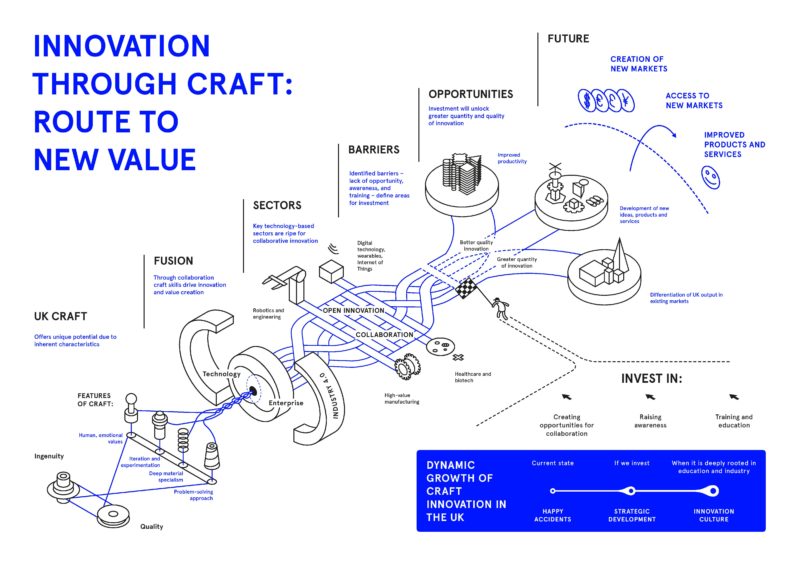Craft in Industry
By Annie Warburton, Creative Director, Crafts Council.
Digital technologies are revolutionising how things are made, where they are made and who makes them.
At the same time, craft is driving innovation in other sectors. We see the tacit intelligence of the hand stimulating innovation in such diverse fields as digital technology, aerospace and bioscience.
Meanwhile – as the Festival of Making celebrates and as new case studies from the Crafts Council reveal – rumours of the demise of manufacturing are much exaggerated. Here, too, a craft mindset has plenty to offer.
As fusion of craft and industry accelerates could the UK become the new Silicon Valley of making?
Innovation through craft is nothing new. Across material disciplines, craft processes have always driven breakthroughs that pass into other fields. This might seem counterintuitive. For some, ‘craft’ calls up notions of tradition at odds with the idea of innovation. Yet what David Pye called ‘the workmanship of risk’ (1968) – the skilled manipulation of material that affords unplanned breakthroughs – is an enduring characteristic of craft that gives it its innovative edge.
What do we mean by innovation in the context of craft? Innovation in craft refers to evolution of technique, discovery of new materials, and application of new tools: think biofacture or redistributed manufacturing. Innovation through craft refers to makers catalysing innovation elsewhere. It concerns the so-called ‘spillover’ effects of craft into other industries.
At the Crafts Council, we’ve tracked, profiled and driven craft innovation through exhibitions, research and interdisciplinary collaborations. It is these innovations – how they occur and how we can make the most of their potential – that form the focus of Innovation through Craft, the KPMG report commissioned by the Crafts Council.

Innovation through Craft: Routes to Growth. Developed by Crafts Council and From Now On. Licensed under Creative Commons – Attribution No Derivs.
In KPMG’s view, ‘Craft skills and knowledge have a strong economic impact and significant potential to drive further growth and innovation in other sectors.’ There are, though, barriers that stand in the way of realising that full potential: lack of understanding of the value of craft innovation, an underinvestment in innovation and collaboration, and the threat to craft education and skills.
Alongside the report, we published a suite of case studies and an accompanying graphic to illustrate the potential for craft to stimulate innovation in the biotech, digital and engineering fields. And this summer we publish a new series of case studies profiling crafts contribution to sectors as diverse as fashion, animation and distributed manufacturing.
This is timely on several counts. Recent years have witnessed an acceleration in collaborative open innovation, and a transformation in making, whose scale of impact is conveyed by the label, ‘the fourth industrial revolution’. At the same time, ‘fusion’ – the combination of creative, technological and enterprise mindsets – has been shown to be a key driver for successful businesses.
UK governments have given increasing attention to the creative industries, resulting in the 2018 Sector Deal as part of the Industrial Strategy. However, international competitors are fast catching up, investing heavily in creative education, research and development, and facilities that bring together physical making and digital expertise. Our report, for example, has attracted attention among designers, researchers, policy makers and educationalists as far afield as Italy, Russia, the United States and China.
Unless we take action to invest in collaborative innovation and in craft education, we will experience a talent drain and lose competitive advantage, as well as the potential to generate solutions to pressing environmental and health challenges through the fusion of physical making and digital skills.
Currently most innovation through craft happens through happy accident. Our vision is to move, through strategic investment, to an established culture of open innovation and collaboration. The potential rewards are great: improved productivity and development of new products and services, enabling us to access new global markets and reap both social and economic benefits.
©️ Annie Warburton, Crafts Council 2018
